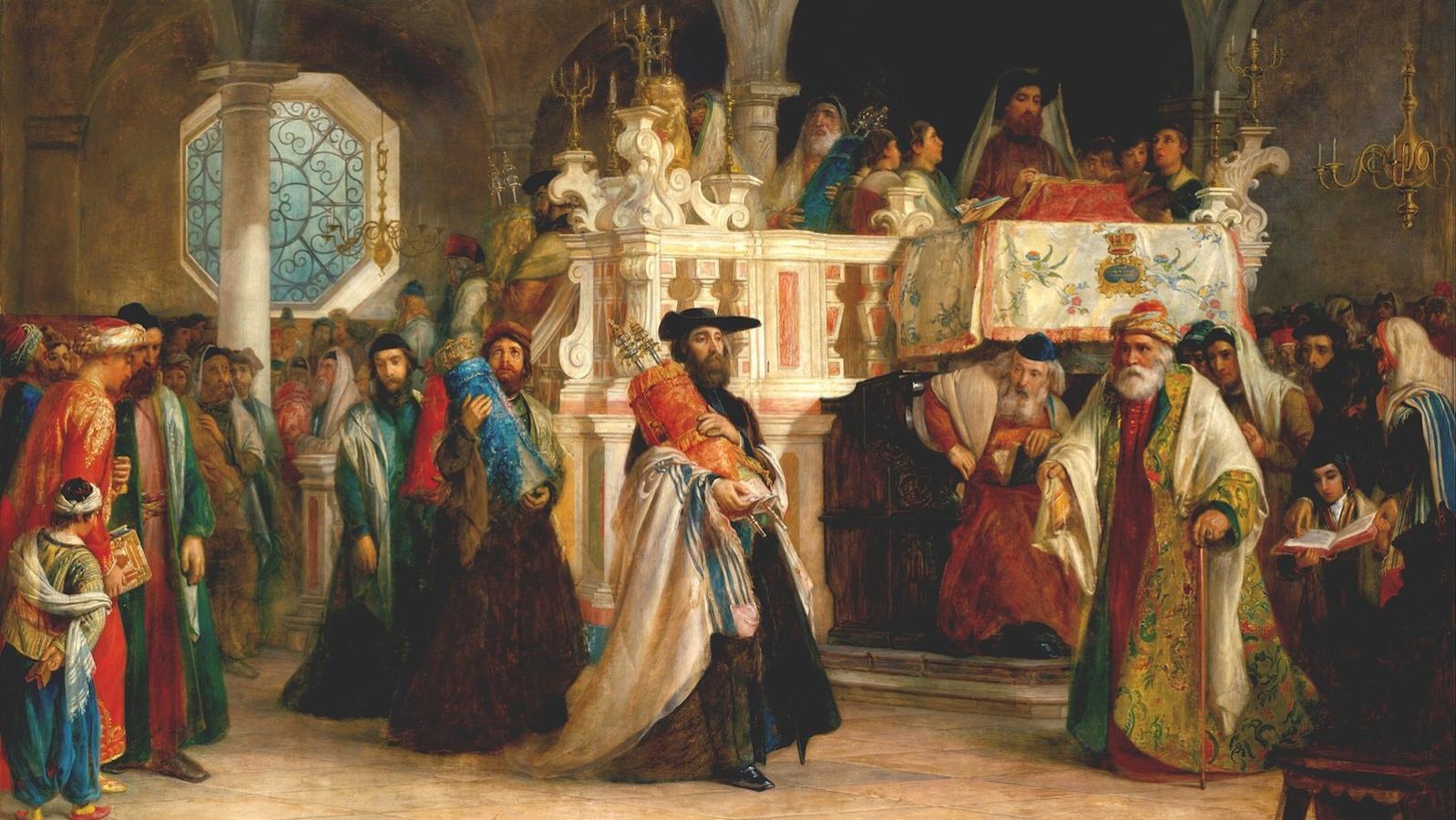THE SECRET OF SIMCHAT TORAH REVEALED

There is a maxim in Jewish ritual law which prohibits mixing two distinct expressions of joy, a rule known as “Ein Me’arvin Simcha Besimcha.”
This means, for example, that weddings are proscribed during chol hamoed, so as not to eclipse the joy of the festival.
And yet, Simchat Torah, which is not mentioned anywhere in the Hebrew Scriptures, has been superimposed onto the festival day of Shmini Atzeret.
Surely by conflating Shmini Atzeret with Simchat Torah we are diluting the joy of a mandated festival day? It seems odd, at best, that this paradox has been enshrined in our calendar.
Before trying to unlock this puzzle, let me explain our obligation to be joyful on festival days. Each of our festivals has particular requirements, put there to direct our celebration. On Pesach we eat matza, maror, and the lamb sacrifice; Shavuot has the special offering of bikkurim and the festival showbread; on Sukkot we wave the Arba Minim (four species), and reside in a Sukka.
All of these obligations share one objective – to remind us why we are celebrating the festival so that we can experience the appropriate joy and happiness. Strangely enough, Shmini Atzeret seems to have no mitzvah to call its own, and there is no indication in the Torah to tell us what we are expected to use as the trigger for joy.
The Talmud (Sukkah 55b) notes that seventy separate sacrifices were offered at the Temple over Sukkot, corresponding to the “seventy nations of the world.” On Shmini Atzeret, however, there was only one offering, “corresponding to the one [chosen] nation.”
While the non-Jewish world seemingly has a role to play throughout the festival of Sukkot, on Shmini Atzeret only the Jewish nation is the focus, and we are only required to bring a solitary offering. The joy and happiness of Shmini Atzeret is more self-contained, without any need for accessories and artificial enhancements.
On each day of Sukkot we invite one of our illustrious biblical ancestors to join us in the Sukka – Abraham, Isaac, Jacob, Moses, Aaron, Joseph and David. Each one of these “ushpizin” guests represents our attempt to repair a particular characteristic we wish to remove from our identity, a trait that connects us to the nations of the world.
Similarly, on each day of Sukkot we wave the Arba Minim in six directions, protecting ourselves from damaging influences that can invade our space from every side.
And on the final day of Sukkot, Hoshana Rabba, as we hold the Arba Minim in our hands, we circle the Torah seven times, and implore God to protect us from any potential danger.
The explicit focus of Sukkot is to mitigate the threat to our viability from the unknown beyond, and the joy we experience on Sukkot directly correlates to our victory over every potentially damaging alternative. But on Shmini Atzeret we no longer seek protection; our safety is generated by the festival itself.
There is a beautiful Midrash in Yalkut Shimoni that gives us a powerful backdrop to the Shmini Atzeret festival:
After the seven days of Sukkot are done, God says to Israel, ‘now you and I will rejoice together’, and when Israel hears this, they begin to praise God, saying (Ps. 118:24), זֶה הַיוֹם עָשָֹה ה’ נָגִילָה וְנִשְֹמְחָה בוֹ – ‘this is the day that God has made, we will rejoice and be happy with it.’
The Midrash goes on to say that the ambiguous pronoun “it” at the end of the verse is not a reference to the festival day; rather “it” refers to the Torah, which the Jews will use on that day to celebrate their unique relationship with God.
The joy of Shmini Atzeret is not associated with any historic event, nor are we required to perform a particular Mitzva. The joy of Shmini Atzeret is meant to reflect our relationship with and love of God’s ‘Torah’.
The feeling of longing that we have for a loving, meaningful relationship with God transcends individual mitzvot, and instead encapsulates the whole Torah, along with everything it contains and imparts. It is about our love of God’s word over and above the details of each Mitzva, and it is this aspect of our identity that distinguishes us from the other nations of the world, clarifying why Shmini Atzeret belongs exclusively to the Jewish nation.
Someone once shared a compelling insight with me about the dichotomy between Jewish penitence and the repentance processes prevalent in other religious faiths.
Those who adhere to other religions are induced to repent out of fear for God’s retribution; Jews cleanse themselves of sin so that they can renew the relationship they have with God, unencumbered by the baggage of iniquity and material distractions.
By the time we reach Shmini Atzeret we no longer need a specific mitzva. The clarity of our relationship with God is at its zenith, and we do not require a crutch to support it, nor a ladder to reach it.
That is why Shmini Atzeret is the perfect time to celebrate and dance with our precious Torah scrolls. People mistakenly believe that the reason for the Torah-oriented celebration on Shmini Atzeret is because this festival happens to coincide with the conclusion of our annual Torah reading cycle. In fact, exactly the opposite is true. We deliberately conclude and recommence the Torah on Shmini Atzeret because Shmini Atzeret is the most appropriate date in our calendar for this moment to occur.
Which means that dancing and singing with Torah scrolls on Shmini Atzeret is not the imposition of an intruding element of joy into the festival. As it turns out, Shmini Atzeret and Simchat Torah are identical – the ultimate celebration of our unique relationship with God.
Image: “The Feast of the Rejoicing of the Law at the Synagogue in Leghorn” (Solomon Alexander Hart, 1850/The Jewish Museum, NY)

